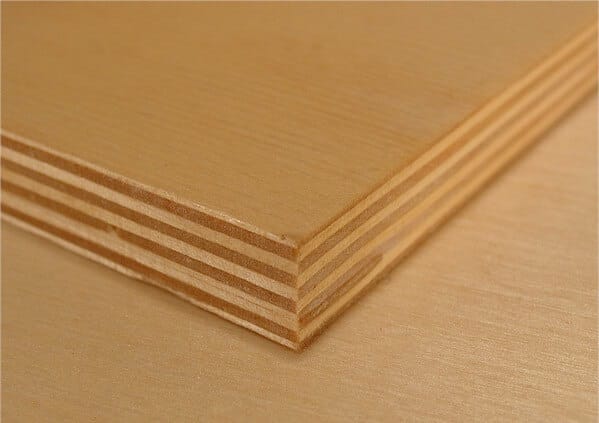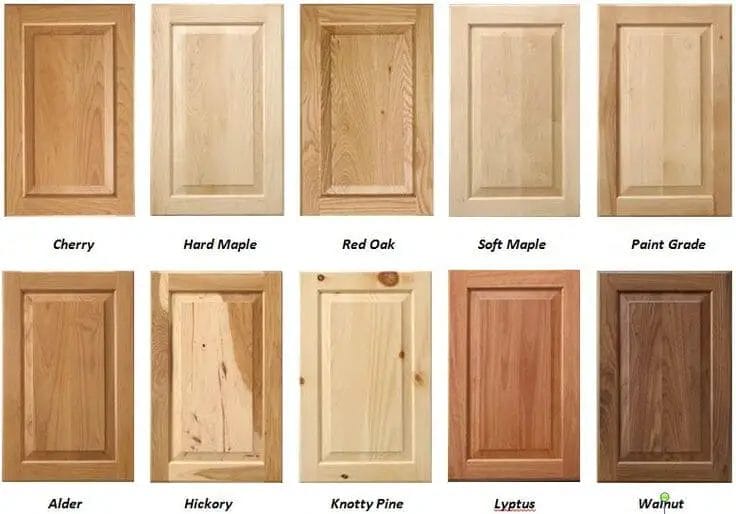Birch wood falls under the category of hardwood, known for its durability and strength.
It is a dense and sturdy wood, making it suitable for a variety of applications, including furniture, flooring, and cabinetry.

With its tight grain pattern, birch wood is resistant to warping and can withstand heavy use over time.
Despite its hardness, birch wood can still be easily worked with and is popular among craftsmen and DIY enthusiasts.
Overall, birch wood offers the perfect combination of hardness and versatility for woodworking projects.

Uses of Birch Wood in Various Industries
Birch wood is a versatile material that finds applications in a wide range of industries. Known for its strength, durability, and aesthetic appeal, birch wood is highly favored by manufacturers and artisans alike. In this section, we will delve into the various uses of birch wood across different industries.
Furniture and Cabinetry
Birch wood is a popular choice for furniture and cabinetry due to its natural beauty and strength. Its fine grain and light color make it an excellent choice for creating elegant and timeless pieces. Birch wood is commonly used in the production of chairs, tables, cabinets, and dressers. Its durability ensures that furniture made from birch wood will last for generations.
Flooring
Birch wood is also widely used in the flooring industry. Its hardness and resistance to wear and tear make it a suitable material for high-traffic areas. Birch flooring is not only durable but also adds a touch of sophistication to any space. Its light color and distinct grain patterns create a visually appealing floor that complements a variety of interior design styles.
Plywood and Veneer
Birch wood is commonly used in the production of plywood and veneer. Plywood made from birch wood is known for its strength, stability, and resistance to warping. It is often used in construction, furniture manufacturing, and packaging. Birch veneer, on the other hand, is used to enhance the appearance of furniture, doors, and other wood products.
Toys and Crafts
Birch wood is a popular choice for crafting toys and other decorative items. Its smooth surface and excellent workability make it easy to carve and shape. Birch wood is often used to create wooden blocks, puzzles, figurines, and musical instruments. Its natural beauty and durability make it a preferred choice for artisans and hobbyists.
Paper and Pulp
Birch wood is a valuable source of fiber for the paper and pulp industry. The wood is processed to obtain pulp, which is used to make various paper products such as newspapers, magazines, and packaging materials. Birch wood pulp is known for its strength and high-quality fibers, making it an essential raw material in the paper manufacturing process.
Woodturning
Birch wood is highly sought after by woodturners due to its attractive grain patterns and workability. Woodturning involves shaping wood on a lathe to create functional and decorative objects such as bowls, vases, and pens. The unique characteristics of birch wood make it a preferred choice for woodturning enthusiasts.
Construction and Joinery
Birch wood is used in the construction and joinery industry for various applications. Its strength, stability, and resistance to decay make it suitable for structural components such as beams, posts, and trusses. Birch wood is also used in joinery to create doors, windows, and moldings.
Musical Instruments
Birch wood is a popular choice for crafting musical instruments, especially drums. Its dense and tight grain structure contributes to the production of clear and resonant sounds. Birch drums are known for their bright and punchy tones, making them a preferred choice for drummers in various musical genres.
Outdoor and Garden Furniture
Birch wood, treated with appropriate finishes and preservatives, is suitable for outdoor and garden furniture. Its natural resistance to decay and weathering makes it a reliable choice for outdoor seating, tables, and garden structures. Birch wood furniture can withstand the elements and retain its beauty for years with proper care.
Art and Sculpture
Birch wood is often used by artists and sculptors as a medium for creating beautiful and intricate artworks. Its fine grain and pale color provide a versatile canvas for artists to express their creativity. Birch wood sculptures and art pieces can be found in galleries and exhibitions around the world.
In summary, birch wood offers a multitude of uses across various industries. From furniture and flooring to toys and crafts, birch wood’s strength, durability, and aesthetic appeal make it a highly sought-after material. Whether it’s used in construction, manufacturing, or artistic endeavors, birch wood continues to be a reliable and versatile choice for both professionals and enthusiasts.

Understanding the Hardness of Birch Wood
Birch wood is a popular choice for various woodworking projects due to its durability and versatility. It is known for its distinctive grain patterns and light color, which make it visually appealing for furniture, cabinetry, and flooring. However, it is important to understand the hardness of birch wood before using it in any project. In this section, we will explore the factors that contribute to the hardness of birch wood and its practical applications.
1. Janka Hardness Scale
The hardness of a wood species is determined by its resistance to indentation. The Janka Hardness Scale is commonly used to measure the hardness of different wood types. It measures the force required to embed a 0.444-inch steel ball into the wood to half its diameter. The higher the Janka hardness rating, the harder the wood.
In the case of birch wood, it has a Janka hardness rating of around 1260 lbf (pounds-force). This rating is considered medium to hard, making birch wood suitable for various applications that require durability and resistance to wear and tear.
2. Factors Affecting Hardness
Several factors contribute to the hardness of birch wood:
- Wood Density: Birch wood has a relatively high density, which gives it its hardness. The denser the wood, the harder it tends to be.
- Growth Rings: Birch trees usually have multiple growth rings, which can affect the hardness of the wood. The wood from slow-grown trees with narrower growth rings tends to be harder than wood from fast-grown trees.
- Moisture Content: The moisture content of the wood also plays a role in its hardness. Kiln-dried birch wood, which has lower moisture content, tends to be harder than air-dried wood.
3. Practical Applications
The hardness of birch wood makes it suitable for a wide range of applications:
- Furniture: Birch wood is commonly used in the construction of furniture due to its strength and durability. It can withstand the daily wear and tear of regular use.
- Cabinetry: Birch wood’s hardness and resistance to moisture make it an excellent choice for kitchen and bathroom cabinets.
- Flooring: Birch wood flooring is a popular choice for its beauty and durability. It can withstand heavy foot traffic without easily scratching or denting.
- Woodworking Projects: Birch wood is often used by woodworkers for various projects, such as shelves, cabinets, and decorative items.
In summary, birch wood is a medium to hard wood species known for its hardness, durability, and attractive grain patterns. It is suitable for a wide range of applications, including furniture, cabinetry, and flooring. Understanding the factors that contribute to the hardness of birch wood can help you make informed decisions when choosing materials for your woodworking projects.

Birch Wood vs Other Hardwoods: A Comparative Analysis
When it comes to choosing the right type of wood for your furniture or woodworking projects, it’s important to consider the qualities and characteristics of different hardwood options. One popular choice among woodworkers is birch wood, known for its durability and versatility. In this section, we will compare birch wood to other hardwoods and explore their similarities and differences.
1. Birch Wood
Birch wood is a hardwood that is commonly used in furniture making, cabinetry, and flooring. It is known for its light color, which ranges from pale yellow to light brown, and its smooth grain pattern. Birch wood is relatively hard and has good shock resistance, making it suitable for high-traffic areas.
One of the key advantages of birch wood is its affordability compared to other hardwoods. It is readily available and more cost-effective, making it a popular choice for budget-conscious woodworkers. Birch wood is also easy to work with, as it can be machined, sanded, and stained with ease.
2. Oak Wood
Oak wood is another popular choice for woodworking projects. It is known for its strength, durability, and distinct grain patterns. Oak wood is available in two main varieties: red oak and white oak. Red oak has a reddish-brown color with a pronounced grain pattern, while white oak has a lighter color with a more subtle grain pattern.
Compared to birch wood, oak is generally harder and denser, which makes it ideal for furniture that needs to withstand heavy use. Oak is also resistant to rot and insect infestations, making it suitable for outdoor furniture and decking. However, oak wood is typically more expensive than birch wood.
3. Maple Wood
Maple wood is known for its light color and smooth grain pattern. It is a hard and dense hardwood that is commonly used in furniture, cabinets, and flooring. Maple wood is highly resistant to wear and tear, making it a durable option for high-traffic areas.
Compared to birch wood, maple has a slightly tighter grain, giving it a more uniform appearance. It is also more resistant to water and moisture, making it a suitable choice for kitchen cabinets or bathroom furniture. However, maple wood tends to be more expensive than birch wood.
4. Cherry Wood
Cherry wood is prized for its beautiful reddish-brown color that darkens over time. It has a smooth and straight grain pattern, which gives it an elegant and luxurious look. Cherry wood is commonly used in high-end furniture, cabinets, and flooring.
Compared to birch wood, cherry wood is softer and less dense. It is known for its excellent workability and finishes well. However, cherry wood is more susceptible to dents and scratches compared to birch wood. Additionally, cherry wood is generally more expensive.
5. Walnut Wood
Walnut wood is known for its rich brown color and beautiful grain patterns. It is a durable hardwood that is commonly used in furniture making and cabinetry. Walnut wood is highly resistant to warping and shrinking, making it suitable for both indoor and outdoor applications.
Compared to birch wood, walnut wood is harder and has a more distinct grain pattern. It is also more expensive than birch wood, making it a popular choice for high-end furniture and woodworking projects.
Summary
When comparing birch wood to other hardwoods, it’s important to consider factors such as color, grain pattern, hardness, durability, and price. Birch wood offers a combination of affordability, durability, and workability, making it a versatile choice for a wide range of woodworking projects. However, each hardwood has its own unique qualities and characteristics, so it’s important to choose the wood that best suits your specific needs and preferences.
Tips for Working with Birch Wood: Techniques and Recommendations
When it comes to woodworking, birch wood is a popular choice due to its durability, straight grain, and attractive appearance. Whether you are a seasoned woodworker or just starting out, here are some tips and techniques to help you get the best results when working with birch wood.
1. Choosing the Right Birch Wood
Before you start your woodworking project, it’s important to choose the right type of birch wood. There are several varieties available, including white birch, yellow birch, and paper birch. Each type has its own distinct characteristics, so consider your project requirements and select the most suitable one.
2. Preparing the Wood
Properly preparing the birch wood will ensure better results. Start by checking for any defects or knots on the surface and remove them if needed. Sanding the wood before starting your project will help create a smooth finish.
3. Tools and Equipment
Having the right tools and equipment is essential for working with birch wood. Some recommended tools include:
- Table saw: Ideal for cutting birch wood into desired sizes and shapes.
- Router: Useful for creating intricate designs and edges.
- Chisels: Essential for carving and shaping the wood.
- Sandpaper: Helps in achieving a smooth finish.
- Clamps: Used to hold the wood pieces together during assembly.
4. Cutting and Shaping
When cutting birch wood, it’s important to use a sharp blade to ensure clean and precise cuts. Take your time and make sure to measure and mark the wood accurately before cutting.
If you need to shape the wood, a router can help you achieve intricate designs and smooth edges. Take care to move the router slowly and steadily to avoid any mistakes or uneven cuts.
5. Joinery Techniques
Birch wood is known for its strength, making it ideal for joinery techniques. Some common joinery techniques you can use with birch wood include:
- Dovetail joints: Provide strong and aesthetically pleasing connections.
- Mortise and tenon joints: Ideal for creating sturdy frames and cabinets.
- Biscuit joints: Help in aligning and connecting wood pieces.
6. Finishing and Sealing
Applying a finish and sealant to your birch wood project not only enhances its appearance but also protects it from moisture and wear. Consider using a clear varnish, lacquer, or wood stain to achieve the desired look. Make sure to follow the manufacturer’s instructions for application and drying times.
7. Safety Precautions
Working with wood requires taking proper safety precautions. Remember to wear protective gear such as safety glasses, gloves, and a dust mask to prevent injuries and inhaling harmful particles. Keep your work area clean and organized to avoid accidents.
8. Practice and Patience
Like any skill, woodworking with birch wood requires practice and patience. Don’t be discouraged if your first few attempts don’t turn out perfectly. Take your time, learn from your mistakes, and keep honing your woodworking skills.
By following these tips and techniques, you can achieve excellent results when working with birch wood. Whether you are building furniture, crafting decorative pieces, or tackling a DIY project, birch wood is a versatile material that can bring your woodworking creations to life.
FAQs
Is birch a hard or soft wood?
Birch is considered a hardwood. It is known for its strength and durability, making it suitable for furniture, flooring, and cabinetry.
Conclusion
In conclusion, the question of whether birch is a hard or soft wood can be answered by considering its characteristics. Birch wood falls into the category of hardwood due to its density and durability. It is known for its strength, resilience, and resistance to wear and tear. This makes it a suitable choice for furniture, flooring, and other applications where toughness is essential.
However, it’s worth noting that within the hardwood category, birch wood is not as hard as some other varieties like oak or hickory. It has a moderate hardness level, making it easier to work with while still offering decent durability and stability. Whether you’re a woodworker or a homeowner looking for a versatile wood option, birch can be a great choice.